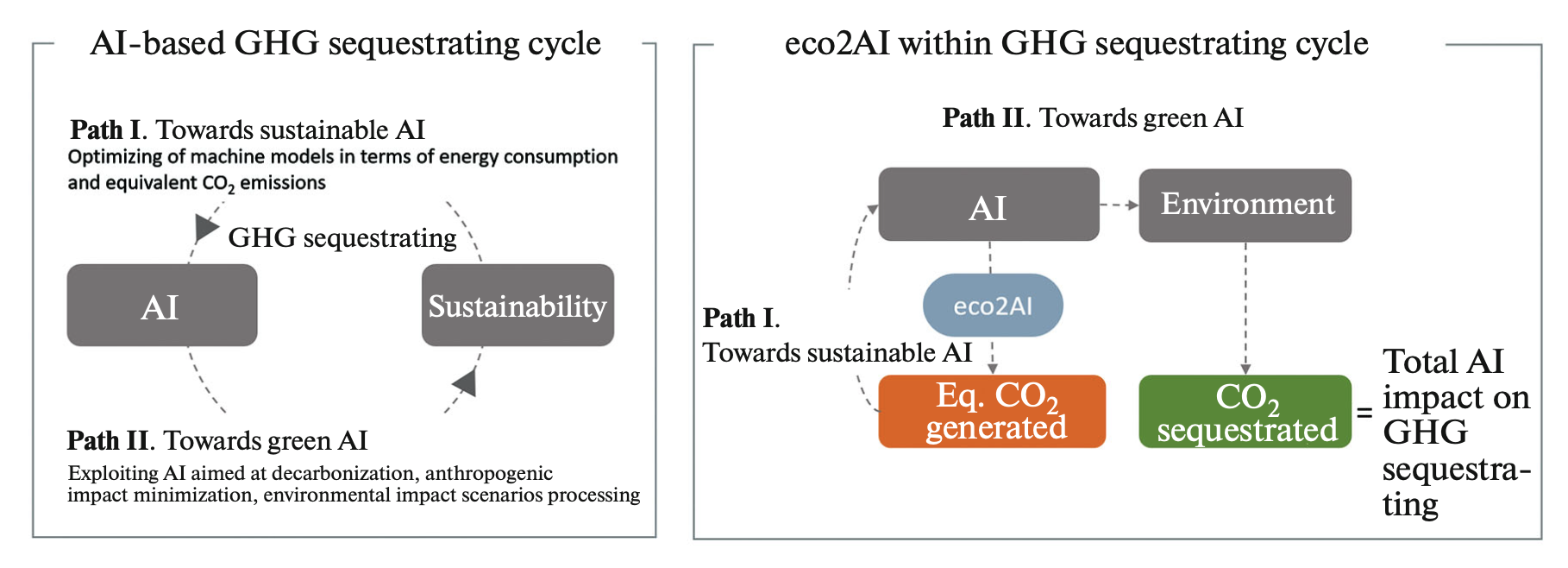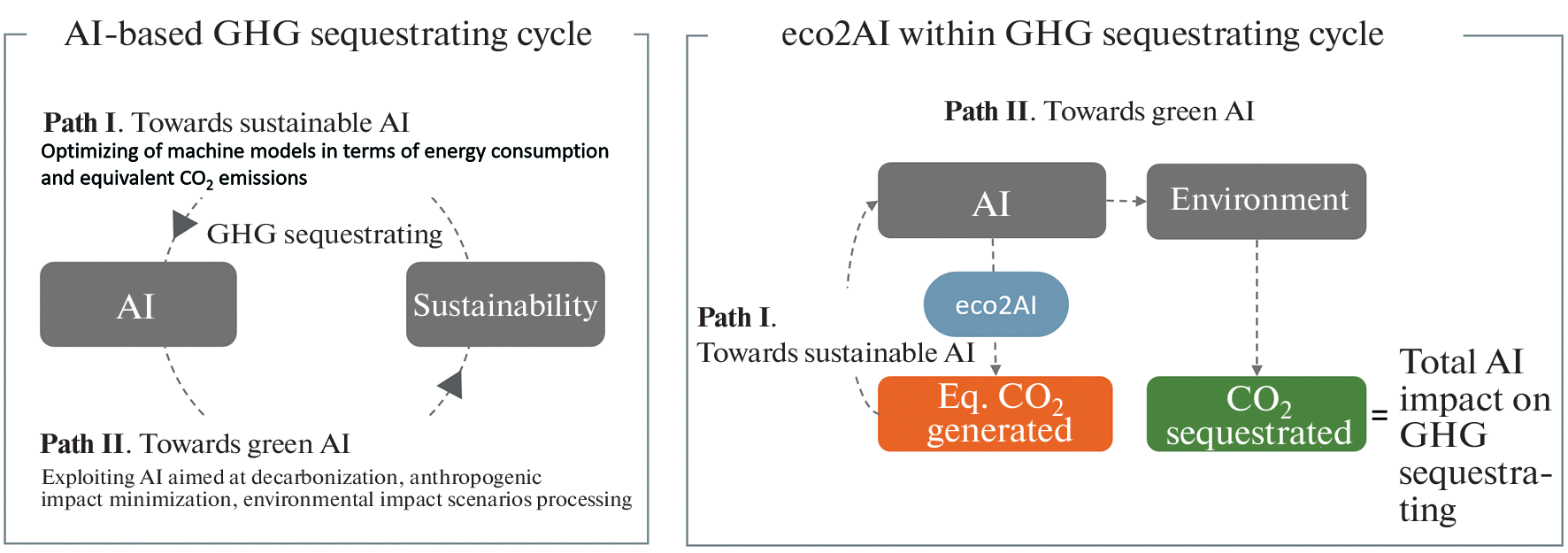Toward Sustainable AI: eco2AI and the Case for Carbon-Conscious Machine Learning
Published in Sustainability and Computational Sciences

In our open-access study published in here, we present eco2AI, an open-source Python package for tracking the energy usage and CO₂-equivalent (eq. CO₂) emissions of machine learning (ML) models during training and inference. This is our call to action for the AI research community: as we push the boundaries of model scale and performance, we must also start optimizing for sustainability.

The Double-Edged Sword of AI
AI can be both a tool for and a source of environmental degradation. On one hand, AI is a potent ally in climate science, enabling high-resolution environmental modeling, smart grid optimization, and energy-efficient infrastructure. On the other hand, state-of-the-art deep learning models—especially in NLP and generative image synthesis—demand immense computational power. For instance, training BERT or GPT-3 can emit as much CO₂ as several transcontinental flights.
Yet, until now, there's been a lack of transparent, practical tools to measure and report these emissions at a granular level—an essential first step to make sustainable AI more than a slogan.
Introducing eco2AI: Measuring What Matters
eco2AI is our response to this measurement gap. It offers:
-
Hardware-specific monitoring of GPU, CPU, and RAM power consumption during model training.
-
Regional granularity with a database of 365 emission intensity coefficients across 209 countries and subregions.
-
Support for reproducibility, encrypted emissions logging, and easy integration into PyTorch pipelines.
-
Quantitative feedback on how architectural changes (e.g., activation quantization) affect carbon emissions.
All this in a lightweight tool published under the Apache 2.0 license, freely available on GitHub and PyPI.
A Case Study in Conscious Modeling
We used eco2AI to compare the training emissions of two generative multimodal models: Malevich (1.3B parameters) and Kandinsky (12B parameters). While both can generate high-quality images from text prompts (in the spirit of DALL·E), Kandinsky’s training consumed over 17 times more energy than Malevich for comparable fine-tuning tasks.
In another experiment, we replaced the GELU activation function in Malevich with its quantized versions (1- to 4-bit approximations). The results were striking: the 3-bit GELU version reduced CO₂ emissions by ~17% without significant loss in model accuracy. This is a concrete demonstration of how smart design choices can cut carbon costs.
Toward a Dual Path: Sustainable and Green AI
We frame our vision in terms of two complementary paths:
-
Toward Sustainable AI: Optimizing models themselves—reducing their carbon footprint through better hardware usage, algorithmic efficiency, and environmental awareness.
-
Toward Green AI: Leveraging AI as a tool for solving environmental challenges—from climate forecasting to carbon market optimization.
Our paper introduces the concept of an AI-based GHG sequestration cycle, where AI can simultaneously consume and reduce emissions. Understanding and managing this cycle requires precise measurement—and that's where eco2AI becomes indispensable.
An Open Invitation to the Community
eco2AI is not the end—it’s a beginning. We envision it as a platform that can:
-
Help researchers benchmark the environmental cost of their models.
-
Guide funding bodies and regulators in evaluating sustainable practices.
-
Assist journals in promoting transparency through carbon reporting alongside model performance metrics.
-
Enable the development of carbon-aware training protocols and climate-sensitive model deployment.
We invite the global AI and scientific community to adopt, contribute to, and critically evaluate eco2AI. The time has come to hold ourselves accountable—not only to benchmarks of accuracy, but also to the carbon ledger of our algorithms.
Follow the Topic
-
Doklady Mathematics

Doklady Mathematics is a peer-reviewed journal presenting significant new research in mathematics and its applications.





Please sign in or register for FREE
If you are a registered user on Research Communities by Springer Nature, please sign in